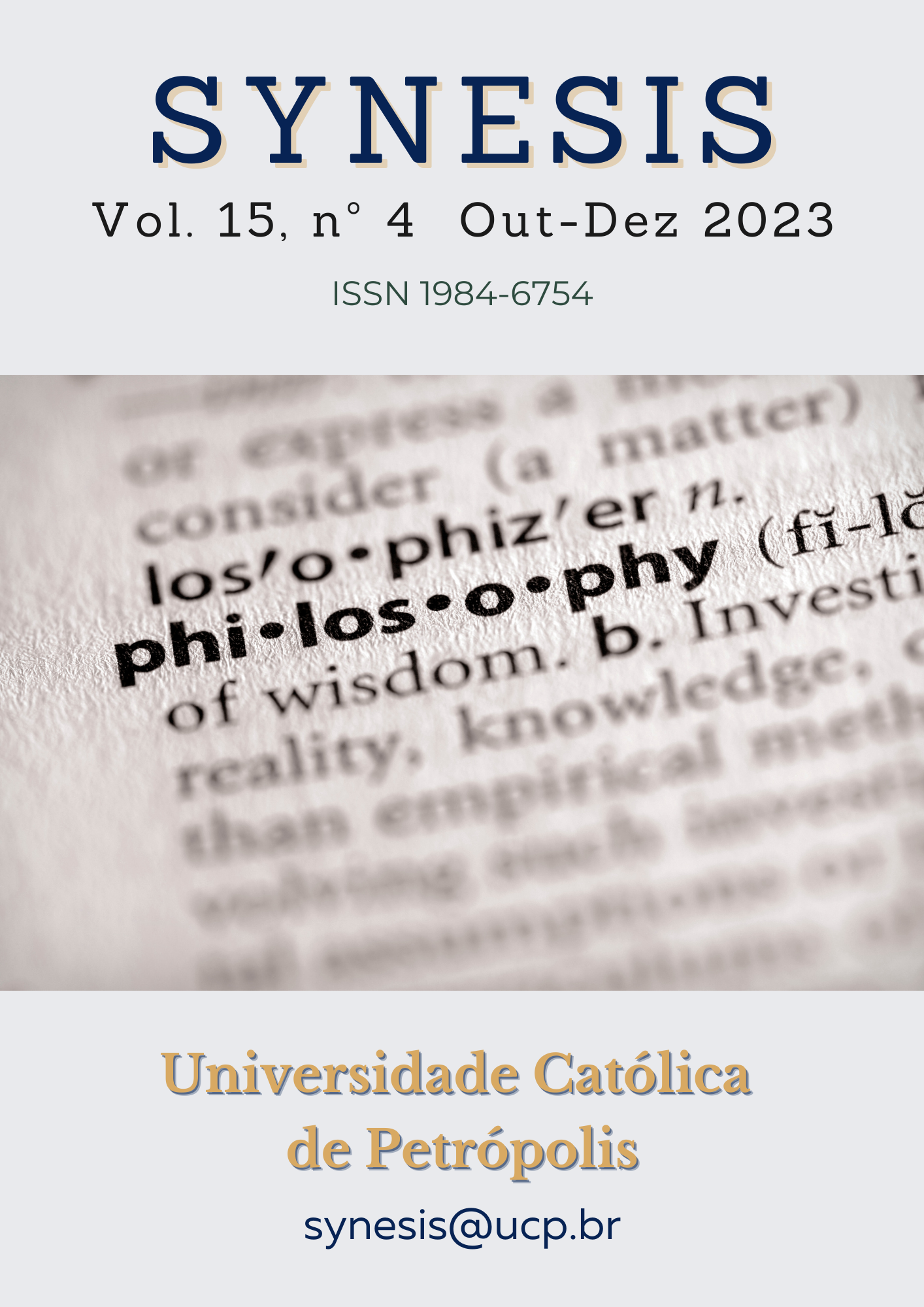Resumo
A sociedade e a educação sustentáveis dependem da política e das estratégias de acessibilidade. A inclusão promove a qualidade da educação e dos serviços para todos em relação ao bem-estar no contexto digital. O acesso a instalações e informações desempenha um papel importante na aquisição de serviços para todos. As pessoas com deficiência têm o direito de acessar informações e todas as instalações. Os jogos são importantes facilitadores da socialização e do aprendizado para o bem-estar. Este estudo de pesquisa tem como objetivo determinar como os jogos acessíveis podem promover a inclusão e o bem-estar com base em uma revisão sistemática da literatura para futuras orientações após tempos de pandemia. Nesse sentido, foi realizada uma análise bibliométrica para obter as seguintes respostas: 1. qual é a distribuição das publicações e citações por anos na Web of Science? 2. Qual é a distribuição dos estudos por idioma e países na pesquisa da Web of Science? 3. Quais são os periódicos mais citados (citações e co-citações) que publicam pesquisas e tipos de documentos na Web of Science? 4. Quais são as palavras-chave e os campos mais citados na Web of Science? 5. Qual é a tendência temporal do título e do resumo sobre jogos acessíveis para o bem-estar na Web of Science?
Referências
Ding, Y., Jacob, E. K., Zhang, Z., Foo, S., Yan, E., George, N. L., & Lijiang, G. (2009). Perspectives on social tagging. Journal of the American Society for Information Science and Technology, 60(12), 2388–2401.
Google. (2013, 2013 21). 2013 21, 2013 accessed at http://www.google.com/trends/: http://
www.google.com/trends/explore?hl=en#q=gamification
Ivetic, D., & Petrovic, V. (2012). Gamifying Education: A Proposed Taxonomy of Satisfaction Metrics. Conference proceedings of “eLearning and Software for Education” (s. 345-350). Novi Sad, Serbia: University of Novi Sad.
Landers, R. N., & Callan, R. C. (2012). Training evaluation in virtual worlds: Development of a Model. Journal of Virtual Worlds Research 5(3), 1-20.
Maksumoto, T. (2012, November 19-21). Possibility of e-learning education that uses the gamification. International Conference of Education, Research and Innovation (s. 3310-3314). Madrid: ICERI2012 Proceedings.
Mutlu, N. D. (2006). Yetişkin eğitimi. Accessed on 25.01.2013 at www.cte-epem.adalet.gov.tr
O’Donovan, S. (2012). Gamification of the Games Course. Technical Report CS12-04-00, Department of Computer Science, University of Cape Town.
Robertson, M. (2010). Can’t play, won’t play. Hide & Seek: Inventing New Kinds of Play, http://www.hideandseek.net/2010/10/06/cant-play-wont-play/.
Singh, S. P. (2012). Gamification: A Strategic Tool for Organizational Effectiveness. International Journal of Management 1(1), 108-113.
Xu, G. (2011). Social networking sites, Web 2.0 technologies and e-learning. Thesis of Master of Computing at Unitec Institute of Technology, 12-123.
Codish, D., & Ravid, G. (2014). Personality Based Gamification – EducationalGamification for Extroverts and Introverts. Proceedings of the 9th Chais Conference for the Study of Innovation and Learning Technologies: Learning in the Technological Era, Israel.
Deterding, S., Khaled, R., Nacke, L. E., & Dixon, D. (2011). Gamification: Toward a definition. In CHI 2011 Gamification Workshop Proceedings, May 7–12, 2011, Vancouver, BC, Canada, ACM 978-1-4503-0268-5/11/05.
Deterding, S., Sicart, M., Nacke, L., OʼHara, K., and Dixon, D. (2011). Gamification: Using game-design elements in nongaming contexts. Proc. CHI EA ‘11, ACM Press, 2425-2428, ACM 978-1-4503-0268-5/11/05.
Domínguez, A., Saenz-de-Navarrete, J., De-Marcos, L., Fernández-Sanz, L., Pagés, C., & Martínez-Herráiz, J. J. (2013). Gamifying learning experiences: Practical implications and outcomes. Computers & Education, 63, 380-392.
Gee, J. (2004). Learning by design: games as learning machines. Interact Educational Multimedia, 8, 15-23.
Kim, B., Park, H., & Baek, Y. (2009). Not just fun, but serious strategies: Using metacognitive strategies in game-based learning. Computers & Education, 52(4), 800- 810.
Simões, J., Redondo, R. D., & Vilas, A. F. (2013). A social gamification framework for a K-6 learning platform. Computers in Human Behavior, 29(2), 345–353.
Bostan, B.,& Tıngöy, Ö. (2015). Dijital oyunlar: Tasarım gereksinimleri ve oyuncu psikolojisi. AJIT-e: Online Academic Journal of Information Technology, 6(19), 7-22.
Çetin, M., & Özgiden, H. (2013). Dijital kültür sürecinde dijital yerliler ve dijital göçmenlerin Twitter kullanım davranışları üzerine bir araştırma. Gümüşhane Üniversitesi İletişim Fakültesi Elektronik Dergisi, 2(1), 172-189.
Dinç, M. (2012). Oyun sektöründe 29 yıl / 1983-2012. Türkiye Dijital Oyunlar Federasyonu. https://www.tbmm.gov.tr/arastirma_komisyonlari/bilisim_internet/docs/sunumlar/turkiye_dijit
al_oyunlar_federasyonu.pdf adresinden erişilmiştir.
Feenberg, A. (2012). Questioning technology. New York: Routledge.
Kabali, H. K., Irigoyen, M. M., Nunez-Davis, R., Budacki, J. G., Mohanty, S. H., Leister, K. P., & Bonner, R. L. (2015). Exposure and use of mobile media devices by young children. Pediatrics, 136(6), 1044- 1050.
Kara, D. N. (2023). Opinions of families of children with special needs about digital games. International Online Journal of Education and Teaching (IOJET), 10(3). 2178-2189.
Karabulut, B. (2015). Bilgi toplumu çağında dijital yerliler, göçmenler ve melezler. Pamukkale Üniversitesi Sosyal Bilimler Enstitüsü Dergisi, 21, 11-23.
Mirici, İ. H. (2019). An Erasmus+ project on the use of the EPOSTL by student teachers of English. The Journal of Language Teaching and Learning, 9(1), 101-114. ISSN: 2146-1732
Öner, G. (2017). Sosyal bilgiler ve tarih dersleri için alternatif bir kaynak: eba.gov.tr. Uluslararası Türk Eğitim Bilimleri Dergisi, 5(9), 227-257.
Parlak, B. (2017). Dijital çağda eğitim: Olanaklar ve uygulamalar üzerine bir analiz. Süleyman Demirel Üniversitesi İktisadi ve İdari Bilimler Fakültesi Dergisi, 22(Kayfor15 Özel Sayısı), 1741-1759.
Veblen, T. (2007). The place of science in modern civilization. New York: Routledge.
Williams, J. & Chann, S. (2009). Using Web 2.0 to Support the Active Learning Experience.
Journal of Information Systems Education, 20(2), 165-174.
Yıldırım, İ., & Demir, S. (2014). Gamification and education Oyunlaştırma ve eğitim. Journal of Human Sciences, 11(1), 655-670.
Archambault, D. (2003). The TiM game engine: Development of computer games accessible to blind and partially sighted children. In N. Callaos, W. Lesso, K. Schewe, & E. Atlam (Eds.), 7Th World Multiconference on Systemics, Cybernetics and Informatics, VolXII, Proceedings (pp. 179–184). INT INST INFORMATICS & SYSTEMICS.
Aria, M., & Cuccurullo, C. (2017). bibliometrix: An R-tool for comprehensive science mapping analysis. Journal of Informetrics, 11(4), 959–975. https://doi.org/10.1016/J.JOI.2017.08.007
van Eck, N. J., & Waltman, L. (2010). Software survey: VOSviewer, a computer program for bibliometric mapping. Scientometrics, 84(2), 523–538. https://doi.org/10.1007/s11192-009-0146-3

Este trabalho está licenciado sob uma licença Creative Commons Attribution-NonCommercial-NoDerivatives 4.0 International License.
Copyright (c) 2023 Synesis (ISSN 1984-6754)

